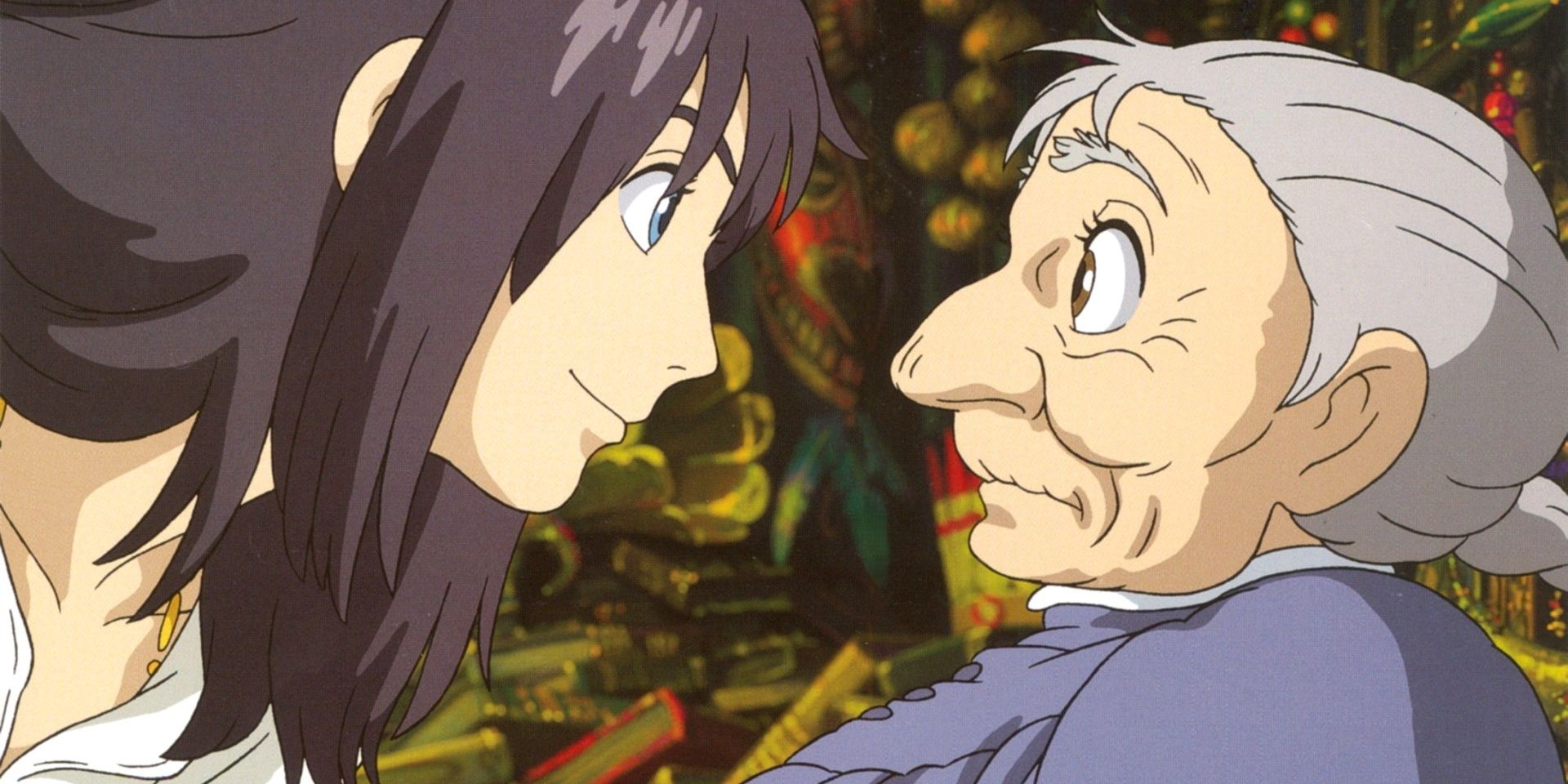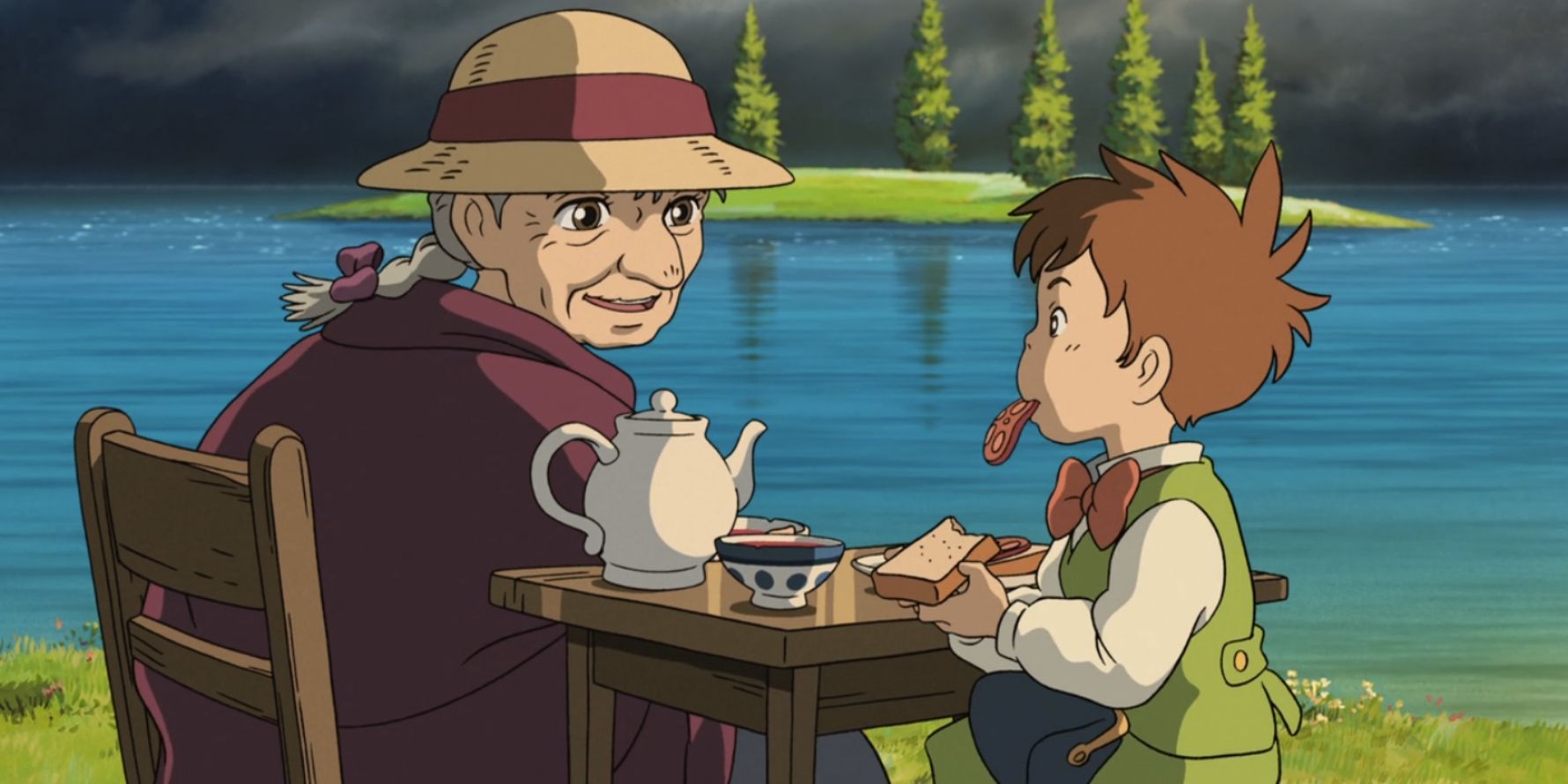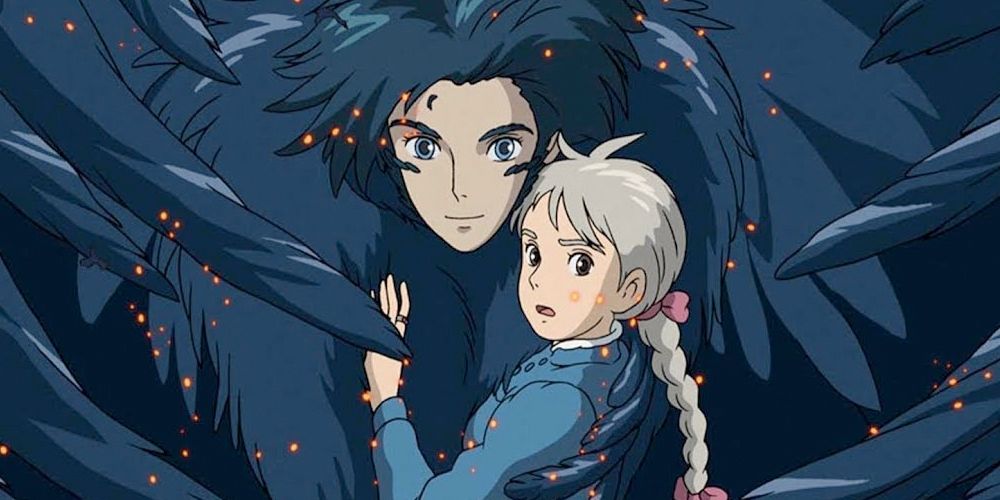Fifteen years ago, Americans were introduced to another remarkable anime movie from director Hayao Miyazaki with Howl's Moving Castle, an adaptation of the Diana Wynne Jones novel of the same name. For Miyazaki, it was another win in a two-decade-long streak of classics like My Neighbor Totoro, Princess Mononoke and Spirited Away that sealed his legacy as one of the great animators of all-time. Most of his catalog focuses on children or young adults overcoming a great obstacle and coming of age, but it has been argued that with Howl, he made a coming of age story for grown-ups.
Independent film analyst Adam Dobay made a post and lecture arguing that, with Howl's Moving Castle, Miyazaki "makes a film-where-people-should-have-come-of-age-but-didn't, shaping his story around how to grow up if you're already an adult." In short, the film offers some solutions for how adults should handle, well, adulting.
While Howl is the titular character, the one audiences follow and relate to more is Sophie Hatter. We're introduced to her as she's making hats for her family's hat shop, which she's meant to inherit. In these early scenes, it's established that, on one hand, she doesn't want to be stuck running the shop for her full adult life, but on the other, she'd rather remain in a place she's familiar with rather than go out into the unknown. She gets a taste of that unknown in a special way upon her first interaction with Howl, who magically has her walking on air in a breathtaking experience.
But just as she gets a taste of what's beyond her hat shop, the Witch of the Waste comes into the store and turns her into a 90-year-old woman. This motivates Sophie to go to the Waste and be cured, but the audience can also notice a sense of relief about her condition because now her responsibilities of running the shop and being a typical adult are over. She's suddenly a senior citizen who can essentially do whatever she wants despite the limitations of old age, and she also recognizes more cunning traits in this form. While hiding in her old age, the only times Sophie briefly returns to her original appearance is when she stands up for something, as she does for Howl when speaking to Sullivan.
Howl, meanwhile, is a wizard who is supposed to be in his late 20s but still acts like an adolescent. He has a meltdown when Sophie mixes up his hair dying potions, for instance, and his blonde hair turns red and then back to its natural black. His wickedly vain personality shines through in this scene, as he states: "I give up, I see no point in living if I can't be beautiful," before conjuring the Spirits of Darkness. All of these over-the-top dramatics simply because his hair changed into a different color. You see, Howl is also a celebrity wizard who wants to be what everyone thinks he is, and not what's actually hiding underneath his charming exterior.
Another immature character trait of Howl's, along with his vanity, is his eagerness to avoid serious situations. With a war going on, he does everything he can to dodge the draft so he won't lose his identity and become like the other wizards who've fought in it. Thus, he has a moving castle that goes wherever he pleases in order to avoid all conflict and confrontation as possible. Despite being famous and in need to be more famous, Howl relies only on the company of the fire demon Calcifer and his pupil, Markl. He loves being with women, but as soon as they start to fall for him, he disappears because he doesn't want to fulfill the obligations of a committed relationship. Being committed to duty and/or a person is a big part of being adult, and Howl wants nothing to do with that.
It's not until the elderly Sophie enters his life that Howl's regular lifestyle is disrupted -- inconvenient for him in the short term but beneficial in the long term. Sophie is not the same beautiful girl from the beginning of the story and she's not the typical girl who instantly falls for him. She's an old soul who sees both the good and bad of the real Howl underneath his public version.
After displaying the characters' issues with adulthood -- one of the main messages of the film -- Dobay claims that "these coping mechanisms to avoid becoming an adult do not work. Escapism does not work." The more they try to bury the truth and these issues underneath the more disastrous the results, meaning they will have to become adults to solve them but also remain true to themselves.
Both Howl and Sophie are the keys to each other's character development into fully responsible grown-ups. Instead of continuing to run away from any kind of responsibility Howl finds someone worth fighting for. As he states near the film's climax, "I've had enough of running away, Sophie. And now I've got something I want to protect. It's you." Sophie's transformation back into her old self is helped, in part, through Howl making her believe in herself. By the time of the film's end, both are ready to be fully mature adults together but with a new sense of what that maturity is. Sophie has her youthful look back but keeps her gray hair, symbolizing her newly-gained wisdom. Howl gains his heart back and is fully ready to be responsible for having one. "A heart's a heavy burden," Sophie remarks after noticing the weight of his heart back in him. Adulthood itself is a heavy burden, but one that Howl's Moving Castle argues doesn't have to be handled alone.



